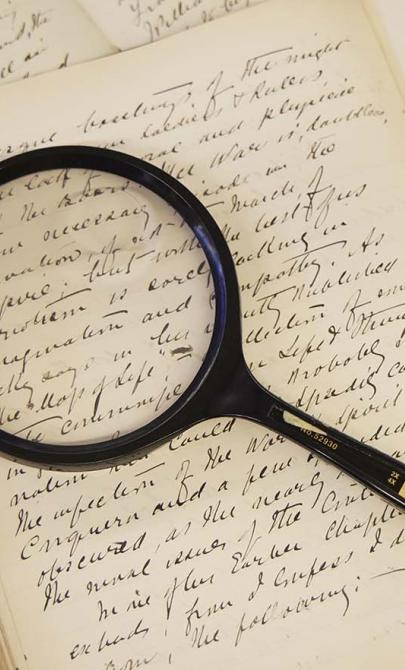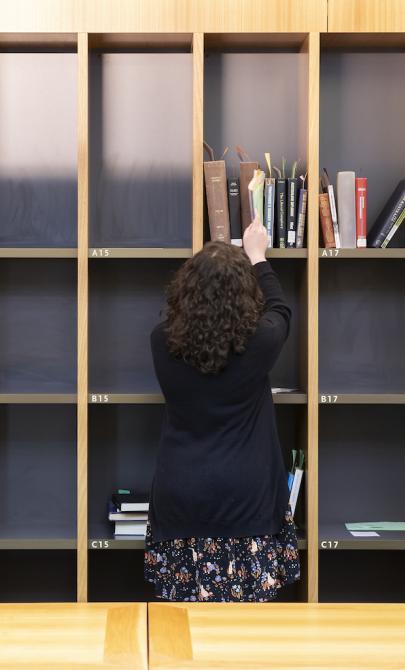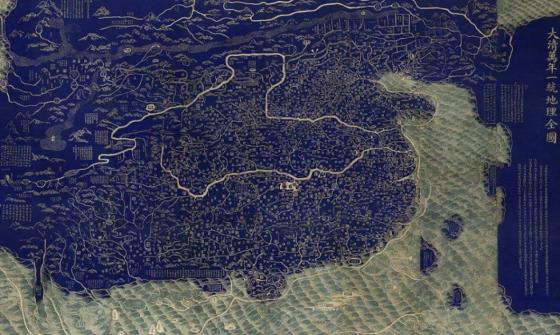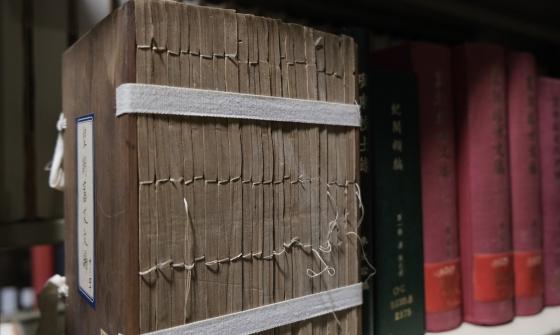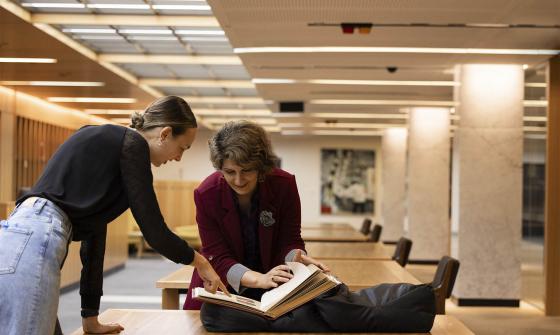Luce Collection
Key items in the collection
Highlights from this collection demonstrate its historical significance and variety.
The Luce Collection contains around 2,000 books, pamphlets and serials. Most are in English, but there are also works in French, German and Dutch; more than 100 titles in Burmese languages; and dictionaries, grammars and translations of Christian texts in various Asian languages.
While the collection is particularly strong in Burmese materials, its scope is broad. It includes works on the history and culture of Thailand, Cambodia, Laos, China, India and Indonesia. The language materials are even more wide-ranging, covering Tibetan, Persian, Japanese and Pacific languages.
Coverage of Burma is comprehensive. It includes history, archaeology, inscriptions, geography, botany, agriculture, languages, tribal customs, travel, memoirs, art and architecture. Most of the books were published between 1900 and 1970, but the collection also contains 19th-century imprints, such as:
- Hiram Cox, Journal of a Residence in the Burmhan Empire (1821)
- John Crawfurd, Journal of an Embassy from the Governor-General of India to the Court of Ava (1834)
- G Deveria, La frontière Sino-Annamite (1886)
- A Judson, Grammar of the Burmese Language (1866)
- AR McMahon, Karens of the Golden Chersonese (1876)
- Ellen Mason, Civilizing Mountain Men: Or Sketches of Mission Work Among the Karens (1864)
- Fred Neale, Narrative of a Residence at the Capital of the Kingdom of Siam (1852)
- John Snodgrass, Narrative of the Burmese War (1827)
- Charles Winter, Six Months in British Burmah (1858).
The collection is strong in government reports and learned journals. Examples include:
- Archaeological Department of Burma, Report of the Superintendent, 1906–54
- Archaeological Survey of India, Annual Report, 1902–38
- British Burma Gazetteer, 1879–80
- Burma Gazetteer, 1910–35
- Epigraphia Birmanica, 1919–36
- Gazetteer of Upper Burma and the Shan States, 1900–01
- Journal of the Royal Asiatic Society, 1964–79
- Journal of the Siam Society, 1905–37, 1946–77.
The pictorial component of the Luce Collection includes four albums, 21 boxes of glass negatives and 75 photographic prints, dating from around 1919 to 1958. The images depict ancient Burmese statues, coins, jewellery, stone inscriptions, carvings and village scenes.
The Luce Collection includes 170 maps, mostly of Burma, with some covering Thailand, Indo–China, China and Assam. About 100 were produced by the Survey of India between 1928 and 1946. The collection also holds 13 large-scale maps created by the British Army between 1942 and 1946, and 7 aeronautical charts produced by the United States Air Force between 1949 and 1952.
Earlier maps include a map of the Malay Peninsula (London, 1906), a map of Yunnan (London, 1908) and an undated map of Burma published by the American Baptist Mission Press. The collection also contains a large modern manuscript map of Burma in the early Pagan period.
Most of Luce’s papers and manuscripts were lost during World War II, so the archives held in the Library mainly cover the period from 1945 to 1979. The material is organised into the following series:
- General correspondence (1922–79)
- Diaries, notebooks and personal documents
- Old Burma – Early Pagan
- Phases of pre-Pagan Burma
- Other manuscripts by Luce
- Paris lectures (1967–68)
- Word lists
- Conferences (1958–77)
- Cuttings and publications
- Manuscripts and publications by other writers
- Miscellaneous papers
Correspondents include many prominent scholars of Southeast Asia, such as:
- DGE Hall
- Oliver Wolters
- Charles Blagden
- HL Shorto
- Alexander Griswold
- GE Harvey
- as well as Burmese scholars and writers.
The word lists, based on research conducted among minority groups in remote parts of Burma, include:
- Old Mon
- Middle Mon
- Late Mon
- Old Khmer
- Karen
- other languages.
They also include loanwords from Chinese, Tibetan, Vietnamese and Sanskrit.
About Gordon Luce
Early life and academic career
Gordon Hannington Luce (1889–1979) was born in Gloucester, England. He was educated at Dean Close School in Cheltenham and went on to study classics and English literature at Emmanuel College, Cambridge. Among his Cambridge friends were Rupert Brooke, Arthur Waley, EM Forster, Maynard Keynes, and others later associated with the Bloomsbury Group.
In 1912, Luce was appointed Lecturer in English Literature at Government College in Rangoon. After study leave at the University of London and the Sorbonne, he returned to Burma and was offered a readership in history when the University of Rangoon was established in 1920.
During World War II, following the Japanese invasion of Burma in 1942, Luce and his wife Tee Tee fled through northern Burma to India. They returned in 1946, and in 1953 Luce was awarded a personal Chair of History at the University of Rangoon. In 1964, he was forced to leave the country due to his foreign citizenship and spent the rest of his life on a farm in Jersey, one of the Channel Islands.
Work on Burmese history and culture
Soon after arriving in Rangoon, Luce developed a deep interest in Burmese culture, encouraged by the Pali scholar Pe Maung Tin, whose sister he married in 1915. Luce wrote extensively on Burmese language, history, art, inscriptions, and architecture, with a particular focus on Pagan, the ancient capital of Burma.
His most significant work was the 3-volume Old Burma: Early Pagan (1969–70). Another major work published posthumously in 1985 was Phases of Pre-Pagan Burma.
Private library and legacy
Luce built a large personal library, including card indexes and transcriptions related to Burmese languages and history. He was forced to abandon this collection in 1942, and it was likely lost to bombing or looting during the war.
After World War II, Luce began rebuilding his library. It became one of the finest private collections on Burmese history and culture.
Background to the collection
Interest in the Luce Collection began in 1963, when National Librarian Harold White visited Gordon Luce in Rangoon. After Luce’s death, his family chose to honour his legacy by sending his manuscripts and personal papers to Canberra, where the collection was acquired in 1980.
The printed materials in the Luce Collection are kept together as a collection within the Asian Collections. The books and serials are individually catalogued; the call numbers have the prefix LUCE. The photographs are housed in the Pictures Collection. The maps are individually catalogued in the Maps Collection. They have all been digitised and are available online. The Manuscripts Collection houses the papers and manuscripts. Use the finding aid.
This guide was prepared using these references:
- BA Shin, Jean Boisselier and AB Griswold (eds), Essays Offered to G.H. Luce by his Colleagues and Friends in Honour of his Seventy-fifth Birthday, 2 vols, Ascona, Artibus Asiae, 1976.
- DGE Hall, Obituary: Gordon Hannington Luce, Bulletin of the School of Oriental and African Studies, University of London, vol. 43 (3), 1980, pp. 581–8.
- Andrew Gosling, Burma and Beyond: The Luce Collection at the National Library of Australia, National Library of Australia News, vol. 6 (13), October 1996, pp. 3–5.


